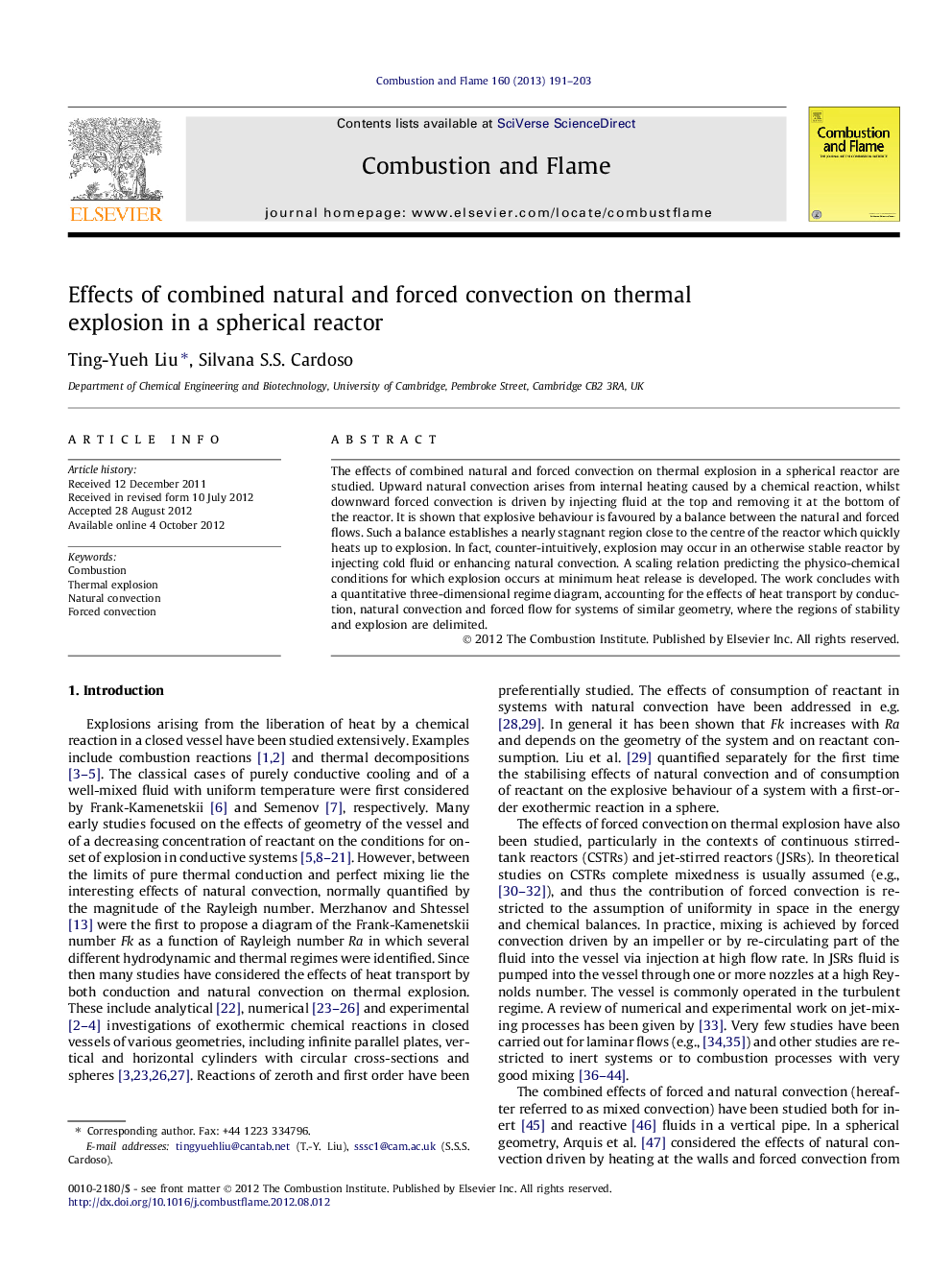| Article ID | Journal | Published Year | Pages | File Type |
|---|---|---|---|---|
| 167134 | Combustion and Flame | 2013 | 13 Pages |
The effects of combined natural and forced convection on thermal explosion in a spherical reactor are studied. Upward natural convection arises from internal heating caused by a chemical reaction, whilst downward forced convection is driven by injecting fluid at the top and removing it at the bottom of the reactor. It is shown that explosive behaviour is favoured by a balance between the natural and forced flows. Such a balance establishes a nearly stagnant region close to the centre of the reactor which quickly heats up to explosion. In fact, counter-intuitively, explosion may occur in an otherwise stable reactor by injecting cold fluid or enhancing natural convection. A scaling relation predicting the physico-chemical conditions for which explosion occurs at minimum heat release is developed. The work concludes with a quantitative three-dimensional regime diagram, accounting for the effects of heat transport by conduction, natural convection and forced flow for systems of similar geometry, where the regions of stability and explosion are delimited.
